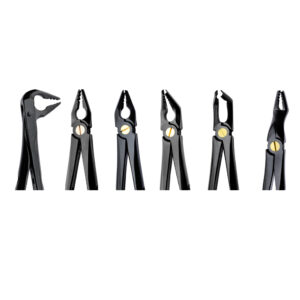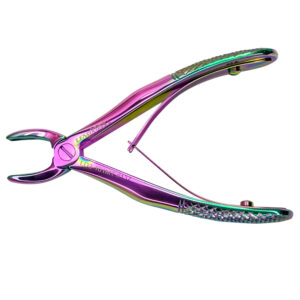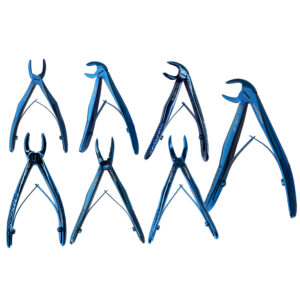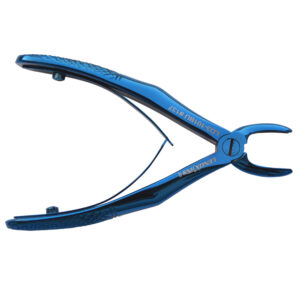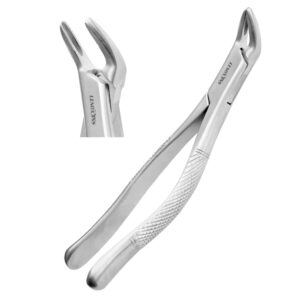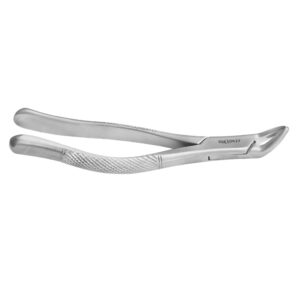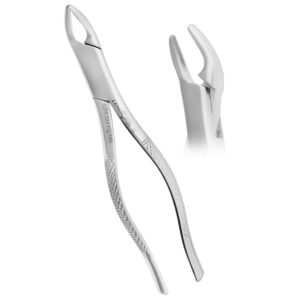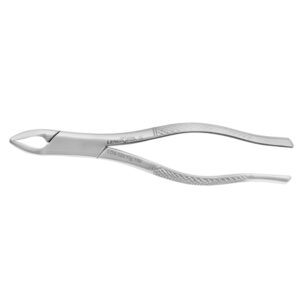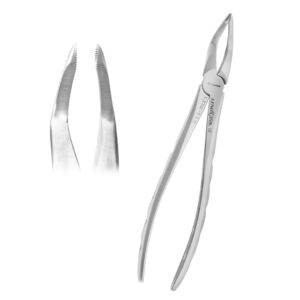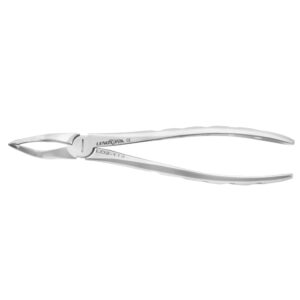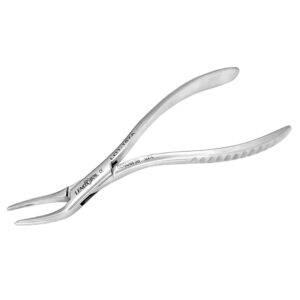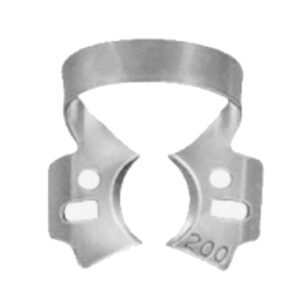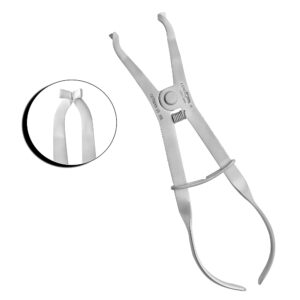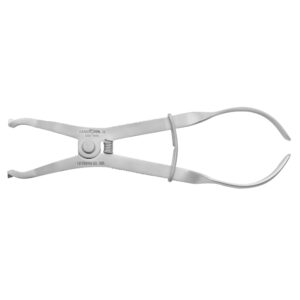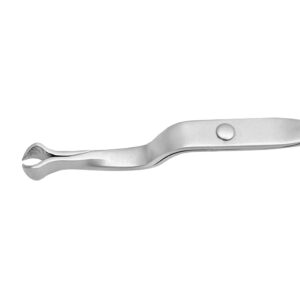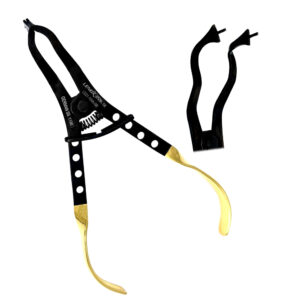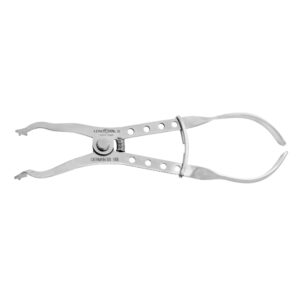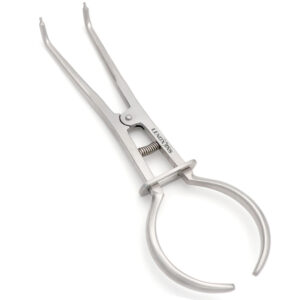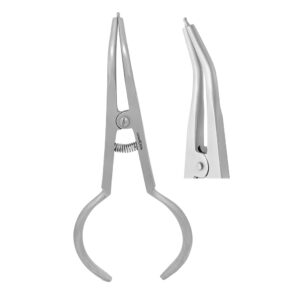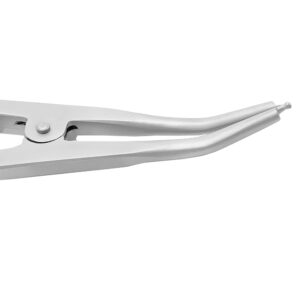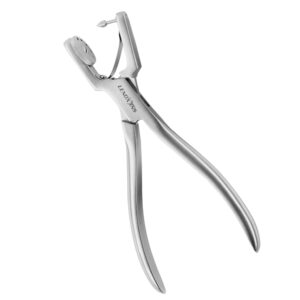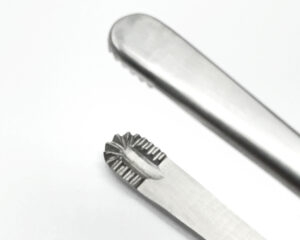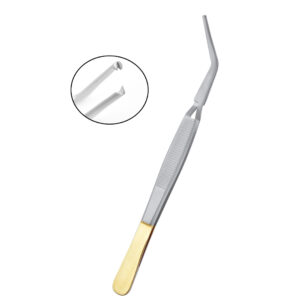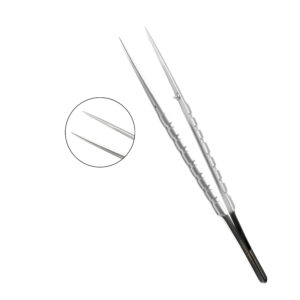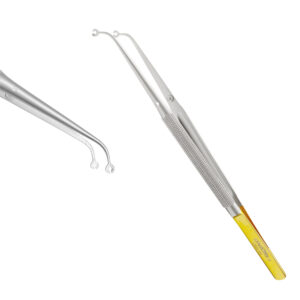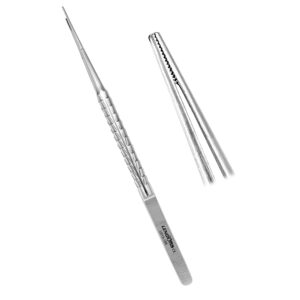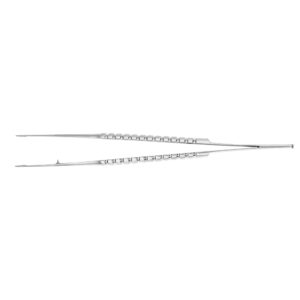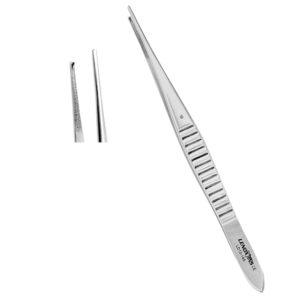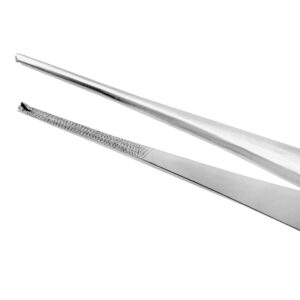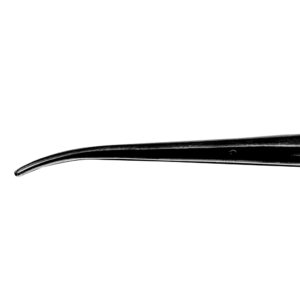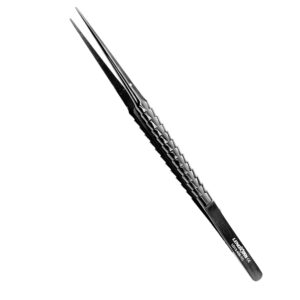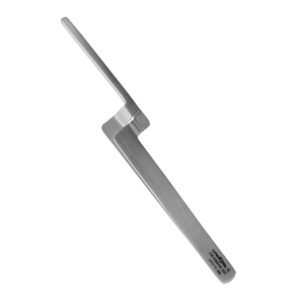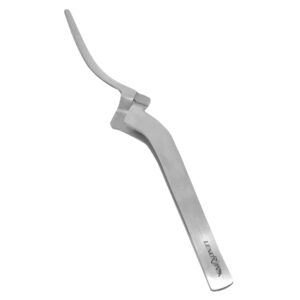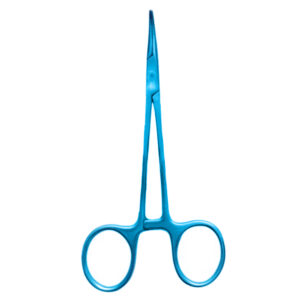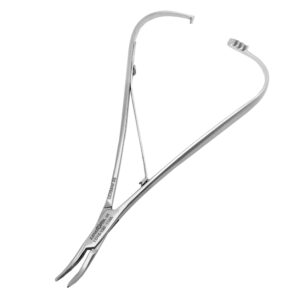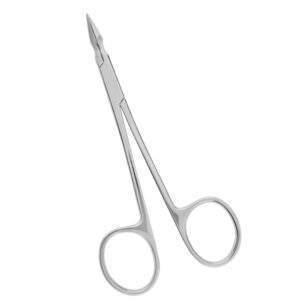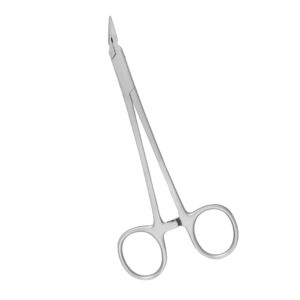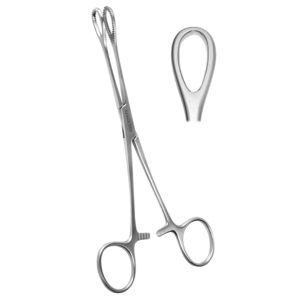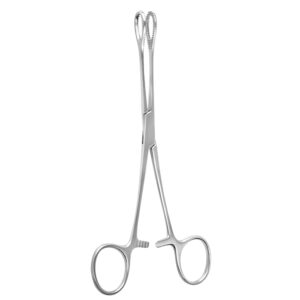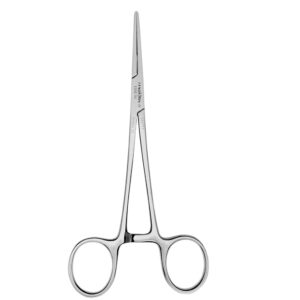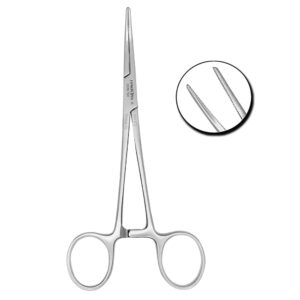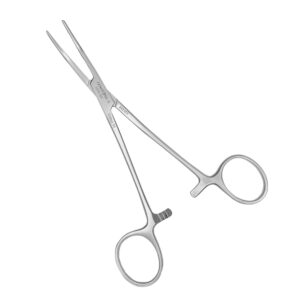Top Features Every Effective Forceps Clamp Should Have
- Posted February 28, 2025
- by lenoxinstro
Essential Guide to Dental Forceps and Forceps Clamps for Every Clinic
Are you looking to enhance your dental practice’s efficiency and patient care? Dental forceps and forceps clamps are essential tools for every clinic, but choosing the right ones can be challenging. This guide will cover the role of dental forceps in clinical practice, provide an overview of forceps clamps, and offer tips on selecting and maintaining these crucial instruments. By the end, you’ll have the knowledge to make informed decisions about dental forceps and clamps, improving your practice’s capabilities and patient outcomes.
Key Takeaways
- Proper forceps selection and technique are crucial for patient comfort and procedure efficiency
- Regular maintenance and sterilization of dental forceps ensure longevity and optimal performance
- Advancements in forceps technology, like smart sensors, improve precision and patient outcomes
- Comprehensive staff training on forceps usage enhances safety and effectiveness in dental procedures
- Ergonomic designs and new materials in forceps reduce hand fatigue during lengthy treatments
Dental Forceps
-
Deep Gripping Extracting Forceps Set of 6 – Premium Dental Extraction Instrument Kit
Rated 0 out of 5CA$900Discover the Deep Gripping Extracting Forceps Set of 6 by Lenox Instruments. Premium-quality stainless steel forceps designed for superior grip and precise dental extractions. Shop now for enhanced performance. -
Pediatric Extracting Forceps Set of 7 – Multi Titanium Coated Dental Surgical Instrument Set
Rated 0 out of 5CA$500Discover the Pediatric Extracting Forceps Set of 7 - Multi Titanium Coated by Lenox Instruments. Premium dental instruments for precise, efficient pediatric extractions. Shop now for quality and durability. -
Pediatric Extracting Forceps Set of 7 – Blue Titanium Coated – Premium Dental Surgical Instruments
Rated 0 out of 5CA$500Discover the Pediatric Extracting Forceps Set of 7 - Blue Titanium Coated by Lenox Instruments. Premium surgical toolset for precise pediatric dental extractions. Shop now for quality and durability. -
Pediatric Extracting Forceps Set of 7 – Black Titanium Coated – Premium Dental Surgical Tool Set
Rated 0 out of 5CA$500Discover the Pediatric Extracting Forceps Set of 7 - Black Titanium Coated by Lenox Instruments. Premium pediatric dental tools designed for precise and efficient extractions. Shop now for quality and durability. -
Apical Lower Universal Forceps Fig 151 – Precision Dental Surgical Instrument
Rated 0 out of 5CA$120Discover the Apical Lower Universal Forceps Fig 151 by Lenox Instruments. Precision-crafted for atraumatic lower tooth extractions. Durable, ergonomic, and professional-grade. Shop now! -
Apical Upper Universal Forceps Fig 150 – Precision Dental Surgical Instrument
Rated 0 out of 5CA$120Discover the Apical Upper Universal Forceps Fig 150 by Lenox Instruments. Precision-crafted for atraumatic upper tooth extractions. Durable, ergonomic, and professional-grade. Shop now! -
Bayonet Upper Roots Forceps – Micro Serrated Edges – Precision Dental Surgical Instrument
Rated 0 out of 5CA$130Discover the Bayonet Upper Roots Forceps - Micro Serrated Edges by Lenox Instruments. Precision-crafted for atraumatic upper root extractions. Durable, ergonomic, and professional-grade. Shop now! -
Root Tip Pick Forceps Fig# 300A Upper Roots – Precision Dental Surgical Instrument
Rated 0 out of 5CA$120Discover the Root Tip Pick Forceps Fig# 300A Upper Roots by Lenox Instruments. Precision-crafted for atraumatic root tip extractions. Durable, ergonomic, and professional-grade. Shop now!
Understanding the Role of Dental Forceps in Clinical Practice
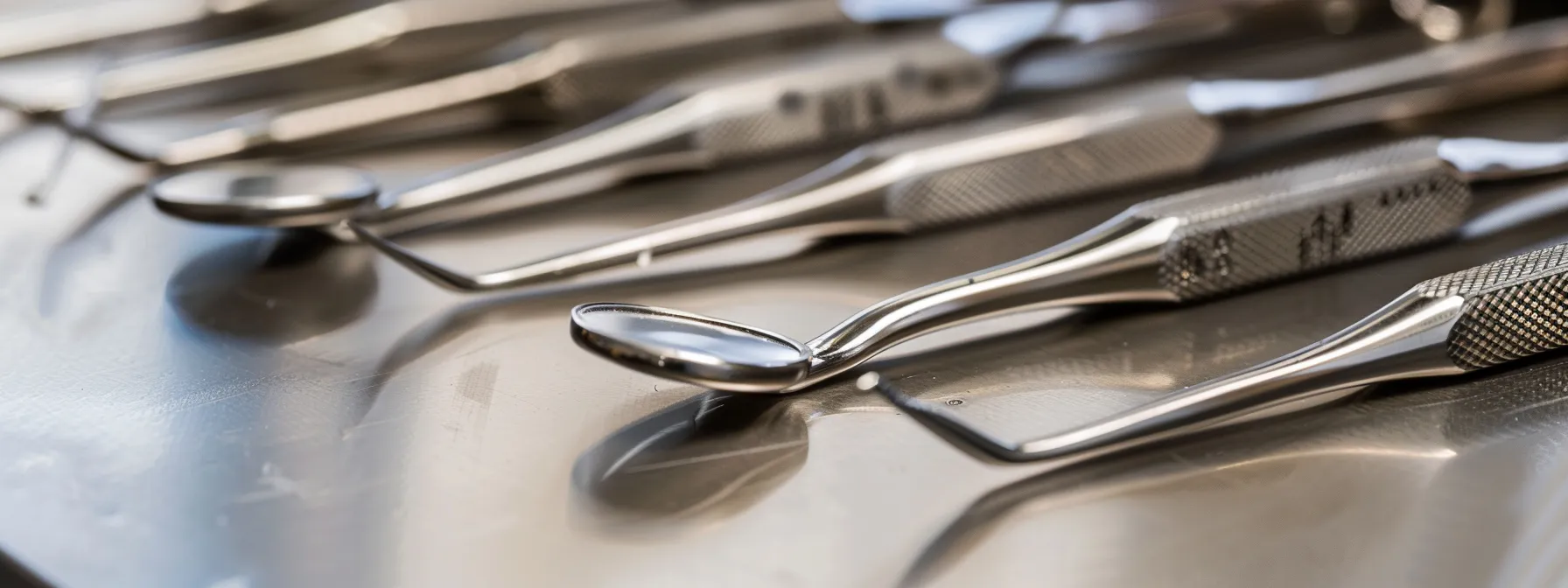
We’ll explore the crucial role of dental forceps in clinical practice. From defining their use cases to examining different types for various procedures, we’ll emphasize the importance of selecting the right forceps for patient comfort. Our discussion will cover corrosion-resistant options for oral procedures, their application in orthodontics, and how to maintain an efficient inventory in your dental laboratory and clinic.
Defining Dental Forceps and Their Use Cases
I use dental forceps extensively in my practice for various procedures, including tooth extraction and handling dental instruments. These essential tools, often made of stainless steel, are designed to grip and manipulate teeth or other objects within the oral cavity. From extracting incisors to holding a syringe, dental forceps play a crucial role in ensuring precise and controlled movements during dental procedures.
In my experience, selecting the right forceps for each specific task is paramount to patient comfort and procedure efficiency. I keep a diverse range of forceps in my inventory, including specialized designs for anterior and posterior teeth. For inquiries about our forceps selection, don’t hesitate to contact us via email address. Remember, proper maintenance of these instruments is crucial for their longevity and effectiveness in tooth extraction and other dental procedures.
Different Types of Dental Forceps for Various Procedures
In my practice, I use various types of dental forceps for different procedures. For instance, I employ jaw forceps for extracting molars, while I use spatula-shaped forceps for manipulating soft tissues during surgical procedures. When administering anesthetics, I rely on specialized forceps designed to hold syringes securely.
I’ve found that using the right dental forceps significantly improves procedure outcomes and patient comfort. For example, when working with digital sensors during radiographic imaging, I use sensor forceps to ensure precise placement. Here’s a list of common dental forceps types I frequently use:
- Extraction forceps for different tooth types
- Hemostatic forceps for controlling bleeding
- Tissue forceps for handling soft tissues
- Orthodontic forceps for wire bending
- Rubber dam forceps for isolation procedures
The Importance of Choosing the Right Forceps for Patient Comfort
In my practice, I’ve learned that selecting the right forceps is crucial for patient comfort, especially when dealing with sensitive procedures like endodontics or premolar extractions. I always ensure my forceps are compatible with latex gloves to maintain proper grip and control. The right forceps can significantly reduce patient discomfort and improve the overall procedure experience.
When choosing forceps, I consider factors such as tooth location, patient anatomy, and specific procedure requirements. For instance, I use different forceps for a scalpel incision versus a tooth extraction. My goal is to minimize trauma and maximize efficiency. Here’s a list of considerations I make when selecting forceps:
- Tooth type and location
- Patient’s mouth size and anatomy
- Procedure specifics (extraction, endodontics, etc.)
- Compatibility with other instruments and materials
- Ergonomics for prolonged use
Comprehensive Overview of Forceps Clamps in Dentistry
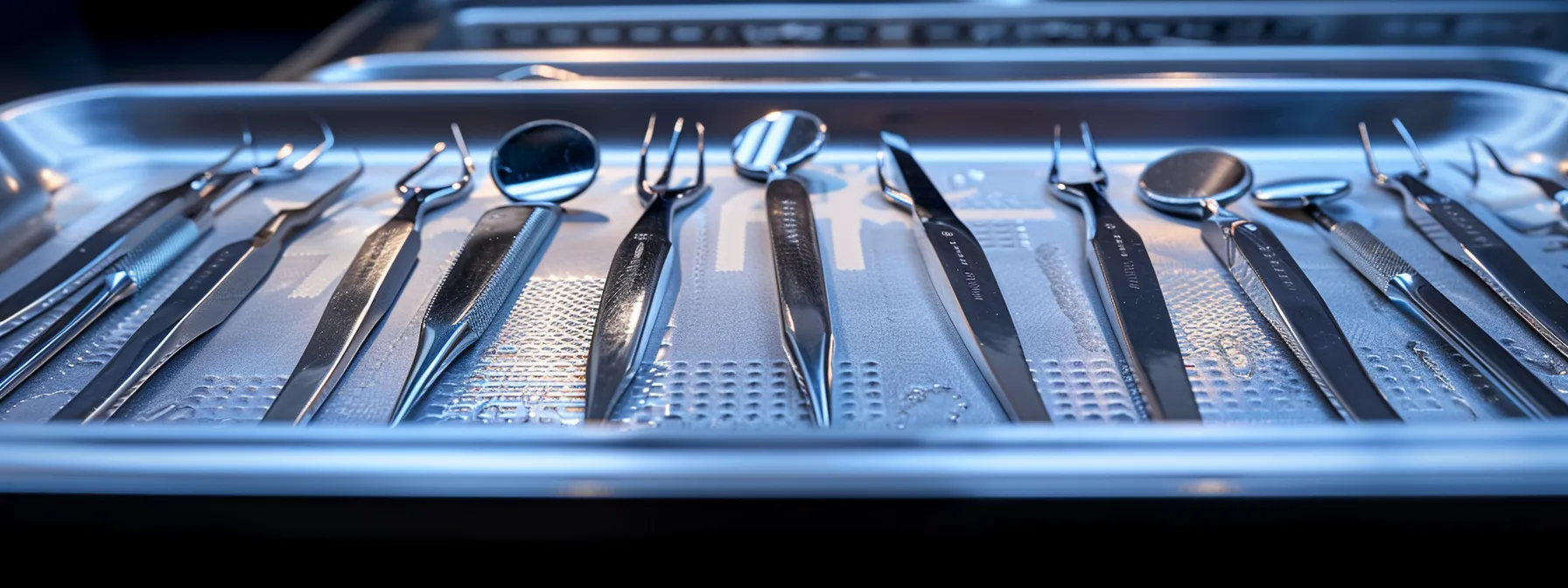
In my practice, I rely on forceps clamps for various dental procedures. These essential tools improve clinical efficiency and precision. I’ll explore their functionality, types, and applications, including their use with scissors and spoons. I’ll also discuss how proper sterilization maintains their effectiveness. Understanding these aspects helps optimize inventory management, ensuring you always have the right clamps ready to add to cart.
Exploring the Functionality of Forceps Clamps
In my practice, I’ve found forceps clamps to be indispensable tools for various dental procedures. These versatile instruments function as retractors, allowing me to hold tissues or dental materials securely during treatments. I often use them in conjunction with elevators when performing extractions, ensuring precise control and minimizing trauma to surrounding structures.
Forceps clamps play a crucial role in crown procedures, helping me position and secure crowns accurately. I also use them to hold cotton rolls or gauze in place when applying disinfectants or mouthwash. Their functionality extends beyond tooth-related tasks, making them essential for maintaining a clear field of vision and ensuring efficient workflow in my dental clinic:
| Application | Functionality |
|---|---|
| Tissue Retraction | Holds soft tissues away from treatment area |
| Material Handling | Secures dental materials during procedures |
| Extraction Assistance | Works with elevators for precise tooth removal |
| Crown Placement | Aids in accurate positioning of dental crowns |
| Oral Hygiene | Holds materials for disinfectant or mouthwash application |
Types of Forceps Clamps and Their Applications
In my practice, I use various types of forceps clamps, each designed for specific applications. I frequently employ steel forceps clamps for their durability and ability to withstand autoclave sterilization. For delicate procedures, I opt for plastic forceps clamps, which are gentler on tissues and provide excellent visibility during anesthesia administration.
Wire forceps clamps are indispensable in my orthodontic work, allowing me to manipulate and adjust wires with precision. I’ve found that having a diverse selection of forceps clamps in my inventory ensures I’m prepared for any dental procedure, from routine cleanings to complex oral surgeries. By regularly maintaining and sterilizing these instruments, I ensure their longevity and optimal performance.
How Forceps Clamps Improve Clinical Efficiency
In my practice, I’ve found that forceps clamps significantly improve clinical efficiency, especially when dealing with deciduous teeth. By securely holding tissues or instruments, these clamps free up my hands, allowing me to focus on intricate procedures. I often use titanium forceps clamps for their lightweight yet durable properties, which reduce hand fatigue during lengthy treatments.
Metal forceps clamps, particularly those with a bayonet design, offer excellent visibility and access in tight spaces. This improved access translates to faster procedure times and better patient outcomes. I’ve noticed that patients experience less discomfort when I use well-designed forceps clamps, as they minimize tissue manipulation and procedure duration. Here’s a breakdown of how different forceps clamps contribute to clinical efficiency:
| Forceps Clamp Type | Efficiency Improvement |
|---|---|
| Titanium Clamps | Reduced hand fatigue, faster procedures |
| Bayonet Design | Better visibility and access in tight spaces |
| Metal Clamps | Durability for frequent use, consistent performance |
| Specialized Clamps | Tailored for specific procedures, reducing tool switches |
Forceps Clamps
-
Rubber Dam Instruments Set – Premium Endodontic Tools by Lenox Instruments
Rated 0 out of 5CA$500Discover the Rubber Dam Instruments Set by Lenox Instruments, a comprehensive kit of premium endodontic tools crafted for precision in rubber dam placement. Trusted by dental professionals in Canada, USA, UK, Australia, and Europe. -
Rubber Dam Farms Set of 3 – High-Quality Dental Instruments
Rated 0 out of 5CA$30Discover the Rubber Dam Farms Set of 3 by Lenox Instruments, a professional dental tool collection designed for effective isolation of teeth during restorative procedures. Trusted by professionals in Canada, USA, UK, Australia, and Europe. -
Dental Rubber Dam Brinker Gingival Tissue Clamps Set of 6 – Premium Retraction Tools
Rated 0 out of 5CA$60Discover the Dental Rubber Dam Brinker Gingival Tissue Clamps Set of 6 by Lenox Instruments, a professional dental tool set designed for effective gingival tissue retraction and rubber dam placement. Trusted by professionals in Canada, USA, UK, Australia, and Europe. -
Rubber Dam Clamps Fig. 200 – Precision Dental Tool
Rated 0 out of 5CA$10Discover the Rubber Dam Clamps Fig. 200 by Lenox Instruments, a professional dental tool designed for effective isolation of lower molars during restorative procedures. Trusted by professionals in Canada, USA, UK, Australia, and Europe. -
Rubber Dam Clamps Fig. 139 – Precision Dental Tool
Rated 0 out of 5CA$10Discover the Rubber Dam Clamps Fig. 139 by Lenox Instruments, a professional dental tool designed for effective isolation of teeth during restorative procedures. Trusted by professionals in Canada, USA, UK, Australia, and Europe. -
Rubber Dam Clamps Fig. 138 – Precision Dental Tool
Rated 0 out of 5CA$10Discover the Rubber Dam Clamps Fig. 138 by Lenox Instruments, a professional dental tool designed for effective isolation of teeth during restorative procedures. Trusted by professionals in Canada, USA, UK, Australia, and Europe. -
Rubber Dam Clamps Fig. 51 – Precision Dental Tool
Rated 0 out of 5CA$10Discover the Rubber Dam Clamps Fig. 51 by Lenox Instruments, a professional dental tool designed for effective isolation of molars during restorative procedures. Trusted by professionals in Canada, USA, UK, Australia, and Europe. -
Rubber Dam Clamps Fig. 7 – Precision Dental Tool
Rated 0 out of 5CA$10Discover the Rubber Dam Clamps Fig. 7 by Lenox Instruments, a professional dental tool designed for effective isolation of lower molars during restorative procedures. Trusted by professionals in Canada, USA, UK, Australia, and Europe.
Selecting the Best Dental Forceps for Your Practice

In my practice, selecting the right dental forceps is crucial. I’ll share key factors to consider when choosing forceps, highlight top-rated options on the market, and discuss how to evaluate quality and durability. Whether you’re using forceps for dam placement, tissue manipulation, or as a hemostat, this guide will help you make informed decisions for your cart. Let’s explore how to optimize your forceps selection using your web browser.
Key Factors to Consider When Choosing Dental Forceps
When I choose dental forceps for my practice, I prioritize the beak design, ensuring it matches the specific tooth anatomy I’ll be working with. For pediatric patients, I select smaller forceps with specially designed beaks to accommodate their unique dental structures. I also consider the manufacturing quality, opting for forceps made from high-grade stainless steel or titanium for durability and corrosion resistance.
In my experience, ergonomics play a crucial role in forceps selection. I look for handles that provide a comfortable grip, reducing hand fatigue during lengthy procedures. For procedures requiring dental dam placement, I choose forceps with features that facilitate easy manipulation of the rubber dam. I always recommend skipping to content that details the forceps’ specifications to ensure they meet your specific clinical needs.
Top-Rated Dental Forceps on the Market
In my experience, the top-rated dental forceps on the market consistently deliver precision and comfort. I’ve found that brands like Hu-Friedy and Carl Martin offer excellent extraction forceps with ergonomic designs that reduce hand fatigue during long procedures. These forceps feature high-quality stainless steel construction, ensuring durability and ease of sterilization.
For specialized procedures, I often rely on American-made forceps from companies like Integra Miltex. Their orthodontic forceps provide superior grip and control when working with wires and brackets. When selecting top-rated forceps, I always consider factors such as weight balance, beak design, and handle comfort to ensure optimal performance in my daily practice.
Evaluating Quality and Durability in Dental Forceps
In my experience, evaluating the quality and durability of dental forceps is crucial for maintaining a reliable inventory. I always examine the material composition, opting for high-grade stainless steel or titanium forceps that resist corrosion and withstand frequent sterilization. I also assess the joint quality, ensuring smooth articulation without excessive play, which indicates superior craftsmanship and longevity.
To ensure durability, I subject new forceps to rigorous testing before adding them to my regular rotation. This includes evaluating their performance under various clinical scenarios and monitoring for any signs of wear or structural weakness. I’ve found that investing in quality forceps from reputable manufacturers ultimately saves time and money by reducing the need for frequent replacements. Here’s my checklist for evaluating dental forceps quality and durability:
- Material composition (stainless steel, titanium)
- Joint quality and articulation
- Surface finish and resistance to pitting
- Weight balance and ergonomic design
- Manufacturer reputation and warranty
- Sterilization compatibility
Dental Forceps
-
Ring Applicator Forceps – Precision Dental Instrument
Rated 0 out of 5CA$60Discover the Ring Applicator Forceps by Lenox Instruments, a premium tool crafted for precision in dental ring application. Trusted by dental professionals in Canada, USA, UK, Australia, and Europe. -
Endodontic File Holder Forceps with Thumb-Lock – Precision Dental Instrument
Rated 0 out of 5CA$250Discover the Endodontic File Holder Forceps with Thumb-Lock by Lenox Instruments, a premium tool crafted for precision in handling endodontic files. Trusted by dental professionals in Canada, USA, UK, Australia, and Europe. -
Ivory Rubber Dam Clamps Applicator Forceps – Black Line Endodontic Instrument
Rated 0 out of 5CA$50Explore the Ivory Rubber Dam Clamps Applicator Forceps by Lenox Instruments, crafted with a straight head design and ergonomic handle for precision in rubber dam clamp placement. Trusted by dental professionals in Canada, USA, UK, Australia, and Europe. -
Ivory Rubber Dam Clamps Applicator Forceps – Precision Endodontic Instrument
Rated 0 out of 5CA$50Discover the Ivory Rubber Dam Clamps Applicator Forceps by Lenox Instruments, a premium tool crafted for precision in rubber dam clamp placement. Trusted by dental professionals in Canada, USA, UK, Australia, and Europe. -
Palmer Rubber Dam Forceps – Precision Endodontic Instrument
Rated 0 out of 5CA$50Discover the Palmer Rubber Dam Forceps by Lenox Instruments, a premium tool crafted for precision in rubber dam clamp placement. Trusted by dental professionals in Canada, USA, UK, Australia, and Europe. -
Separating Elastic Plier – Precision Orthodontic Instrument
Rated 0 out of 5CA$50Discover the Separating Elastic Plier by Lenox Instruments, a premium orthodontic tool crafted for precision in elastic separator placement. Trusted by orthodontic professionals in Canada, USA, UK, Australia, and Europe. -
Ainsworth Rubber Dam Punch Forceps – Precision Endodontic Instrument
Rated 0 out of 5CA$89Discover the Ainsworth Rubber Dam Punch Forceps by Lenox Instruments, a premium tool crafted for precision in rubber dam preparation. Trusted by dental professionals in Canada, USA, UK, Australia, and Europe.
Proper Maintenance and Care for Dental Forceps and Clamps
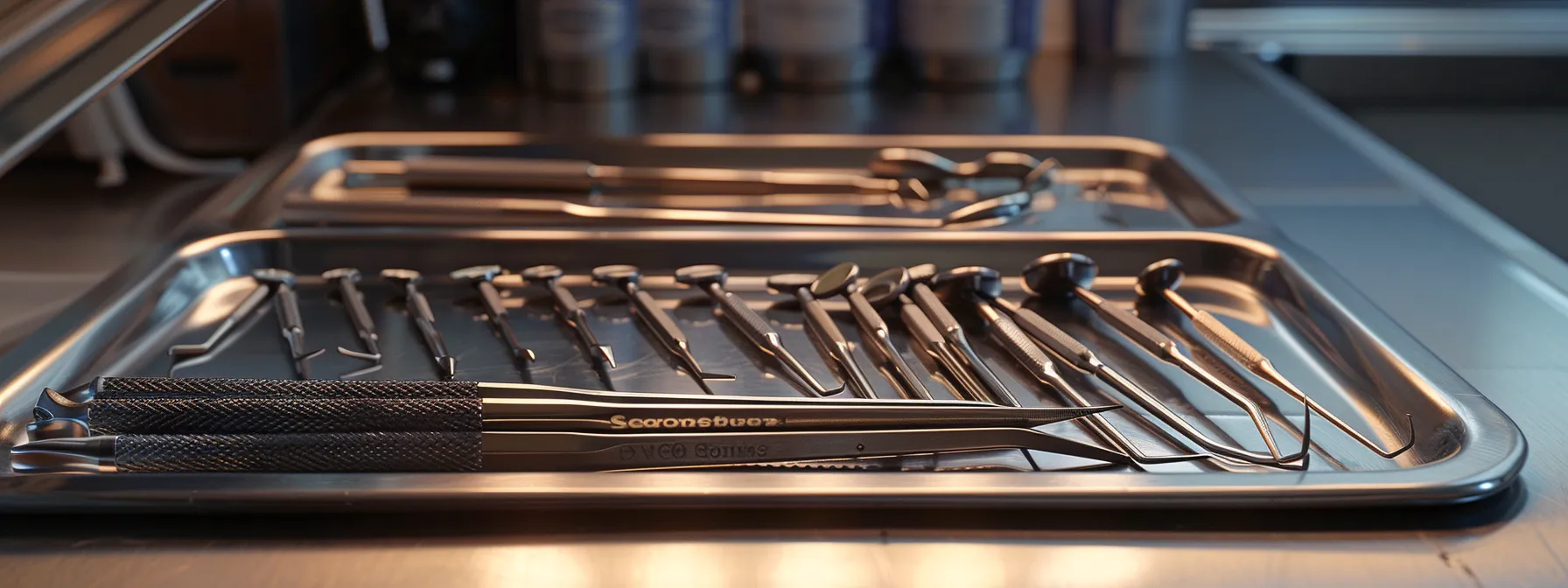
In my practice, proper maintenance of dental forceps and clamps is crucial for their longevity and performance. I’ll share my step-by-step process for cleaning and sterilizing these instruments, best practices for maintaining forceps clamps, and tips to extend the lifespan of dental forceps. These insights will help you maintain your tools effectively, ensuring optimal functionality and patient safety.
Steps for Cleaning and Sterilizing Dental Instruments
In my dental practice, I follow a strict cleaning and sterilization protocol for all instruments, including forceps and clamps. First, I thoroughly rinse the instruments under running water to remove visible debris. Then, I immerse them in an enzymatic cleaner, ensuring all surfaces are covered, and use an ultrasonic cleaner for optimal cleaning.
After cleaning, I rinse the instruments again and dry them completely. I then package the forceps and clamps in sterilization pouches and process them in an autoclave. I always adhere to the manufacturer’s guidelines for sterilization temperature and duration. Here’s my step-by-step process:
- Rinse instruments under running water
- Immerse in enzymatic cleaner
- Use ultrasonic cleaner
- Rinse and dry thoroughly
- Package in sterilization pouches
- Process in autoclave
- Store in a clean, dry area
Best Practices for Maintaining Forceps Clamps
In my practice, I maintain forceps clamps by regularly inspecting them for signs of wear or damage. I pay close attention to the hinges and gripping surfaces, applying a small amount of lubricant to ensure smooth operation. After each use, I clean the clamps thoroughly, removing any debris or residue that could affect their performance.
I store my forceps clamps in a dry, clean environment to prevent corrosion. For clamps with specialized coatings, I follow the manufacturer’s care instructions to preserve their protective layers. I also rotate my inventory of clamps to ensure even wear across all instruments, extending their overall lifespan and maintaining consistent performance in my dental procedures.
Tips for Extending the Lifespan of Dental Forceps
In my practice, I’ve found that proper storage is crucial for extending the lifespan of dental forceps. I always store them in a dry environment to prevent corrosion and ensure they’re not in contact with other instruments to avoid scratches or damage. After each use, I carefully inspect the forceps for signs of wear, paying special attention to the beaks and joints.
To maintain optimal performance, I regularly lubricate the joints of my forceps with a dental-grade lubricant. This practice prevents rust and ensures smooth operation during procedures. I also rotate my forceps inventory to distribute wear evenly across all instruments. Here’s my checklist for extending the lifespan of dental forceps:
- Store in a dry, clean environment
- Avoid contact with other instruments
- Perform regular inspections
- Lubricate joints with dental-grade lubricant
- Rotate inventory for even wear
- Follow manufacturer’s care instructions
- Address any issues promptly
Common Practices and Techniques for Using Dental Forceps
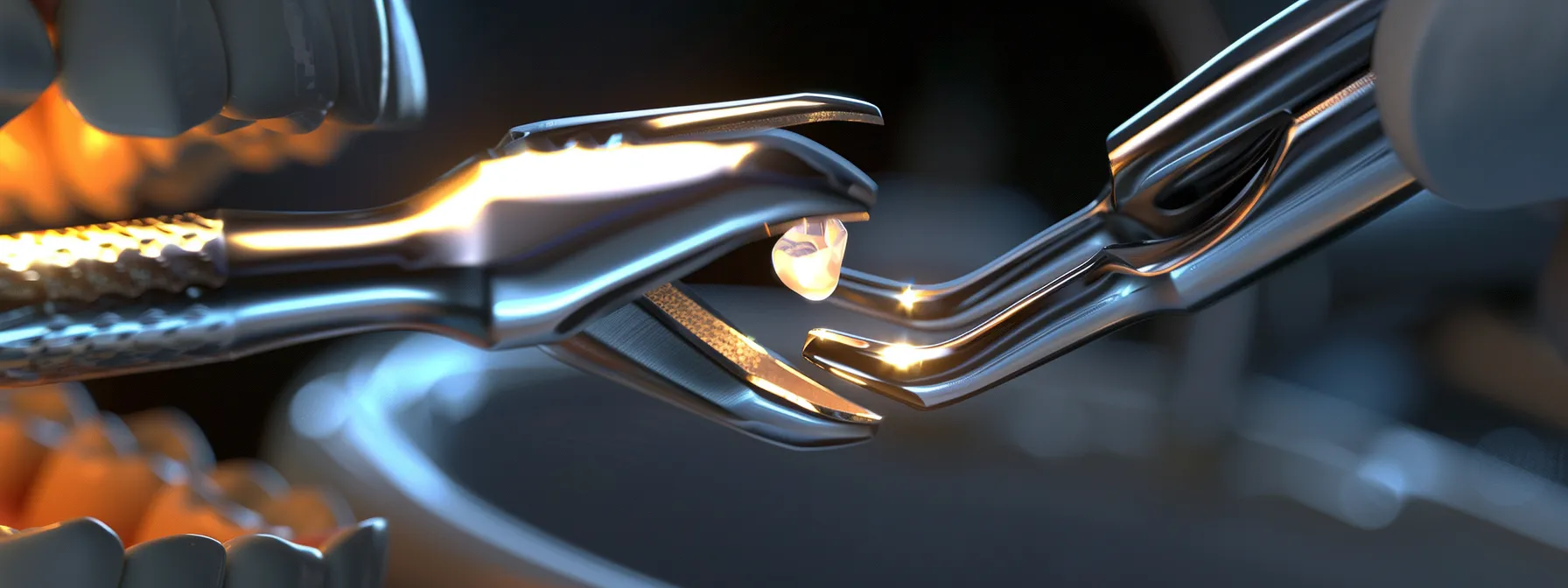
In my practice, I’ve refined techniques for effective extraction procedures using dental forceps. I’ll share my approach to safety considerations, emphasizing patient comfort and minimizing complications. I’ve also developed a comprehensive training program for my staff, ensuring proper forceps usage across all procedures. These insights will help you optimize your clinic’s forceps techniques and enhance overall patient care.
Techniques for Effective Extraction Procedures
In my practice, I’ve found that successful tooth extraction begins with proper patient positioning and anesthesia administration. I always ensure the patient is comfortably reclined and their head is stabilized before proceeding. For maxillary extractions, I position the patient’s head slightly back, while for mandibular extractions, I ask them to open wide and tilt their head slightly forward.
When using dental forceps, I apply controlled, steady pressure rather than sudden jerky movements. I carefully luxate the tooth using a figure-eight motion, gradually increasing force as needed. For multi-rooted teeth, I often section the tooth to facilitate easier removal. Here’s my step-by-step approach to effective extractions:
- Administer appropriate anesthesia
- Position patient correctly
- Select suitable forceps for the specific tooth
- Apply controlled pressure and luxate the tooth
- Use figure-eight motion to expand the socket
- Increase force gradually as needed
- Section multi-rooted teeth if necessary
- Remove tooth with smooth, controlled motion
Safety Considerations When Using Dental Forceps
In my practice, I prioritize safety when using dental forceps. I always ensure proper sterilization of instruments before each procedure to prevent cross-contamination. I use personal protective equipment, including gloves, masks, and eye protection, to safeguard myself and my patients. Before extraction, I carefully review the patient’s medical history and x-rays to identify any potential complications.
During procedures, I maintain a firm grip on the forceps to prevent slippage and potential injury. I’m cautious about applying excessive force, which could lead to root fractures or damage to adjacent teeth. I also protect the patient’s soft tissues by using appropriate retractors and gauze. Here’s a summary of my safety considerations:
| Safety Measure | Purpose |
|---|---|
| Instrument sterilization | Prevent cross-contamination |
| Personal protective equipment | Protect practitioner and patient |
| Medical history review | Identify potential complications |
| Proper forceps grip | Prevent slippage and injury |
| Controlled force application | Avoid root fractures and damage |
| Soft tissue protection | Minimize trauma to surrounding areas |
Training Staff on Proper Forceps Usage
In my practice, I’ve developed a comprehensive training program for my staff on proper forceps usage. I start with a thorough review of dental anatomy and the principles of tooth extraction. Then, I demonstrate proper forceps selection, grip techniques, and application of force using dental models. I emphasize the importance of patient positioning and proper anesthesia administration before any extraction procedure.
To reinforce learning, I conduct hands-on training sessions where staff members practice on extracted teeth. I supervise these sessions closely, providing immediate feedback and correcting any errors in technique. I also incorporate case studies and simulations to help my team understand how to handle various clinical scenarios and potential complications. This thorough approach ensures that all staff members are confident and competent in using dental forceps effectively and safely.
Tissue Forceps
-
Tissue Forceps Russian Pattern 20cm Premium German Stainless Steel – Precision Surgical Instrument
Rated 0 out of 5CA$50Explore the Tissue Forceps Russian Pattern 20cm Premium German Stainless Steel by Lenox Instruments, crafted with circular serrated tips for precision in tissue handling. Trusted by surgical professionals in Canada, USA, UK, Australia, and Europe. -
PRF Tissue Forceps – Precision Dental Surgical Instrument
Rated 0 out of 5CA$40Explore the PRF Tissue Forceps by Lenox Instruments, crafted with fine toothed tips for precision in handling PRF membranes. Trusted by dental professionals in Canada, USA, UK, Australia, and Europe. -
Micro Tissue Forceps, 17cm – Diamond Dust Coated – Precision Surgical Instrument
Rated 0 out of 5CA$90Explore the Micro Tissue Forceps, 17cm - Diamond Dust Coated by Lenox Instruments, crafted with diamond dust-coated tips for precision in micro-surgical procedures. Trusted by surgical professionals in Canada, USA, UK, Australia, and Europe. -
Corn Suture Forceps 17cm Diamond Dust Coated – Precision Surgical Instrument
Rated 0 out of 5CA$90Explore the Corn Suture Forceps 17cm Diamond Dust Coated by Lenox Instruments, crafted with diamond dust-coated tips for precision in suture handling. Trusted by surgical professionals in Canada, USA, UK, Australia, and Europe. -
Cooley Tissue Forceps 18cm EGR Handle – Precision Surgical Instrument
Rated 0 out of 5CA$80Explore the Cooley Tissue Forceps 18cm EGR Handle by Lenox Instruments, crafted with an ergonomic handle for precision in tissue handling. Trusted by surgical professionals in Canada, USA, UK, Australia, and Europe. -
Tissue Forceps 15cm – Precision Surgical Instrument
Rated 0 out of 5CA$30Explore the Tissue Forceps 15cm by Lenox Instruments, crafted with finely serrated tips for precision in tissue handling. Trusted by surgical professionals in Canada, USA, UK, Australia, and Europe. -
Micro Surgical Forceps Tweezers TC 17cm Curved – Precision Surgical Instrument
Rated 0 out of 5CA$90Explore the Micro Surgical Forceps Tweezers TC 17cm Curved by Lenox Instruments, crafted with tungsten carbide tips for precision in micro-surgical procedures. Trusted by surgical professionals in Canada, USA, UK, Australia, and Europe. -
Micro Surgical Forceps 17cm Straight – Precision Surgical Instrument
Rated 0 out of 5CA$90Explore the Micro Surgical Forceps 17cm Straight by Lenox Instruments, crafted with finely serrated tips for precision in micro-surgical procedures. Trusted by surgical professionals in Canada, USA, UK, Australia, and Europe.
Innovations and Trends in Dental Forceps and Clamps
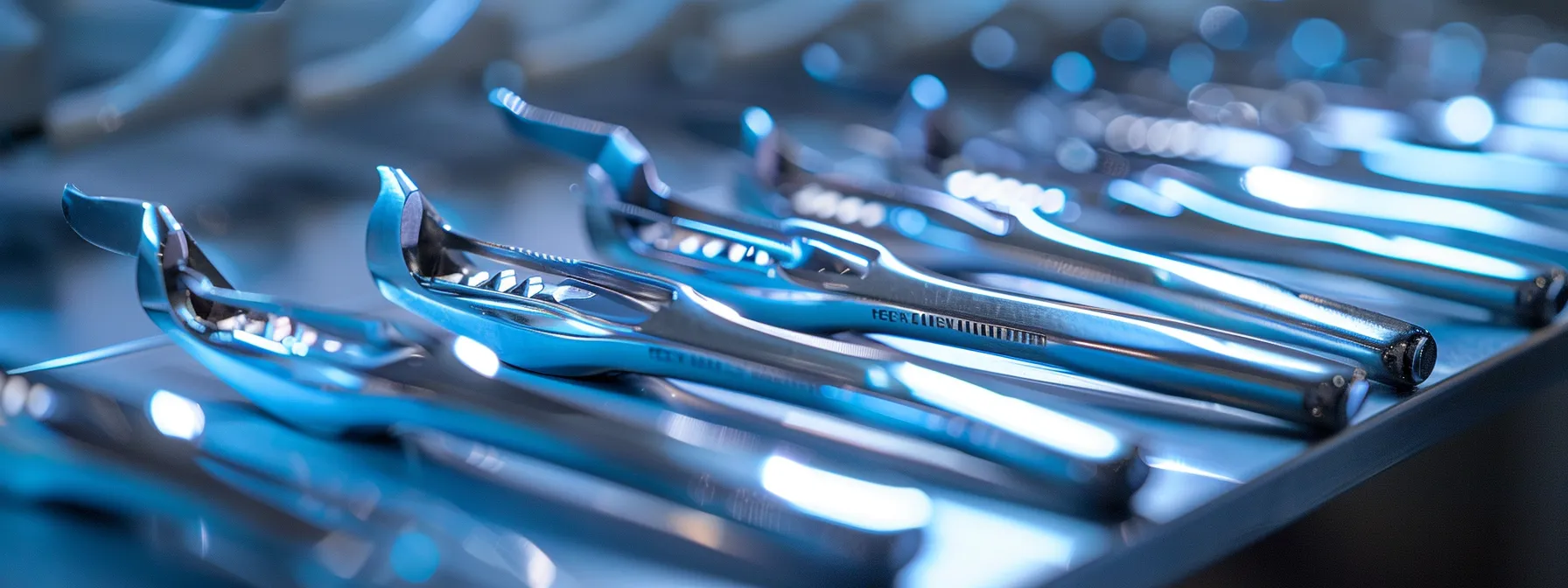
In my practice, I’ve witnessed significant advancements in dental forceps and clamps. I’ll explore the latest developments in instrument technology, discussing future design trends and their impact on patient care. These innovations have transformed my approach to dental procedures, improving precision and patient comfort. I’m excited to share how these new tools are shaping the future of dentistry.
Latest Developments in Dental Instrument Technology
In my practice, I’ve observed significant advancements in dental instrument technology, particularly in forceps and clamps. I’ve recently incorporated ergonomic forceps with titanium-coated tips, which provide enhanced grip and reduce hand fatigue during lengthy procedures. These innovative instruments have improved my precision and efficiency, especially when extracting difficult-to-reach molars.
I’ve also embraced the use of smart forceps equipped with pressure sensors. These instruments provide real-time feedback on the force applied during extractions, helping me avoid excessive pressure that could lead to complications. This technology has been particularly beneficial in training new staff members, allowing them to develop a better sense of appropriate force application in various clinical scenarios.
Future Trends in Dental Forceps Design
In my practice, I’ve noticed a trend towards precision-engineered dental forceps with advanced materials like carbon fiber and titanium alloys. These materials offer superior strength-to-weight ratios, reducing hand fatigue during lengthy procedures. I’ve found that forceps with interchangeable tips are gaining popularity, allowing for greater versatility and cost-effectiveness in dental clinics.
I’m particularly excited about the integration of smart technology in dental forceps design. I’ve recently tested prototype forceps with built-in force sensors and digital displays, providing real-time feedback on applied pressure. This innovation has significantly improved my extraction technique and reduced the risk of complications. I believe these smart forceps will become standard equipment in dental practices within the next few years.
Impact of Innovations on Patient Care and Outcomes
In my practice, I’ve witnessed how innovations in dental forceps have significantly improved patient care and outcomes. The introduction of ergonomically designed forceps has reduced procedure times and minimized patient discomfort. I’ve noticed a marked decrease in post-extraction complications since implementing these advanced tools, particularly in cases involving impacted wisdom teeth.
The integration of smart technology in dental forceps has revolutionized my approach to patient education. I now use real-time force feedback data to explain extraction procedures to patients, enhancing their understanding and reducing anxiety. This transparency has led to improved patient satisfaction scores and increased trust in my clinical decisions, ultimately resulting in better overall treatment outcomes.
Articulating Forceps
-
Articulating Forceps Miller 15cm STR – Precision Restorative Instrument
Rated 0 out of 5CA$25Discover the Articulating Forceps Miller 15cm STR by Lenox Instruments, a professional dental tool designed for precise handling of articulating paper during restorative procedures. Trusted by professionals in Canada, USA, UK, Australia, and Europe. -
Articulating Forceps Miller 15cm Cvd – Precision Restorative Instrument
Rated 0 out of 5CA$25Discover the Articulating Forceps Miller 15cm Cvd by Lenox Instruments, a professional dental tool designed for precise handling of articulating paper during restorative procedures. Trusted by professionals in Canada, USA, UK, Australia, and Europe.
Frequently Asked Questions
What are the main types of dental forceps used in clinical practice?
Dental forceps used in clinical practice include extraction forceps for upper and lower teeth, universal forceps, root forceps, and pediatric forceps. These specialized instruments are designed to grip and remove teeth efficiently during extractions, with variations tailored for different tooth types and patient needs.
How do I choose the right forceps clamps for my dental clinic?
Consider your clinic’s specialties, patient demographics, and common procedures when selecting forceps clamps. Evaluate factors like size, grip, material, and sterilization method. Consult with experienced colleagues and reputable dental suppliers to ensure you choose high-quality, ergonomic forceps that meet your specific needs and enhance your clinical efficiency.
What maintenance steps should I follow for dental forceps and clamps?
Regularly clean and sterilize dental forceps and clamps after each use. Inspect for damage, lubricate moving parts, and store in a dry environment. Sharpen or replace worn instruments as needed. Follow manufacturer guidelines for specific maintenance instructions to ensure longevity and optimal performance.
Can you explain the proper technique for using dental forceps?
Proper dental forceps technique involves selecting the appropriate forceps, firmly grasping the tooth at the cervical area, applying controlled pressure, and using rotational movements to loosen the tooth. Maintain a stable grip and ensure proper positioning to minimize damage to surrounding tissues during extraction.
What are the latest innovations in dental forceps technology?
Recent advancements in dental forceps technology include ergonomic designs for improved grip, titanium alloy construction for durability, and precision-engineered tips for enhanced extraction accuracy. Some models now feature LED lighting and interchangeable heads, offering versatility and better visibility during procedures.
Conclusion
Dental forceps and forceps clamps are indispensable tools in modern dental practice, playing a crucial role in various procedures from extractions to orthodontics. Selecting the right forceps for each specific task is paramount to patient comfort, procedure efficiency, and overall clinical success. Proper maintenance, including regular cleaning, sterilization, and careful storage, is essential for extending the lifespan of these instruments and ensuring optimal performance. As innovations in dental instrument technology continue to advance, incorporating ergonomic designs and smart features, dental professionals can look forward to improved precision, reduced hand fatigue, and enhanced patient outcomes.



